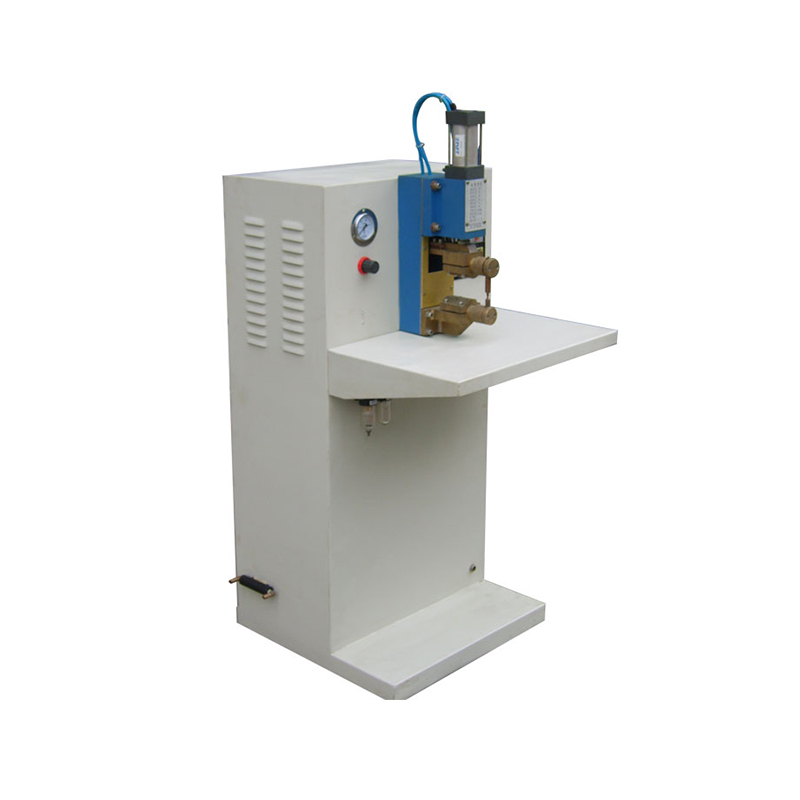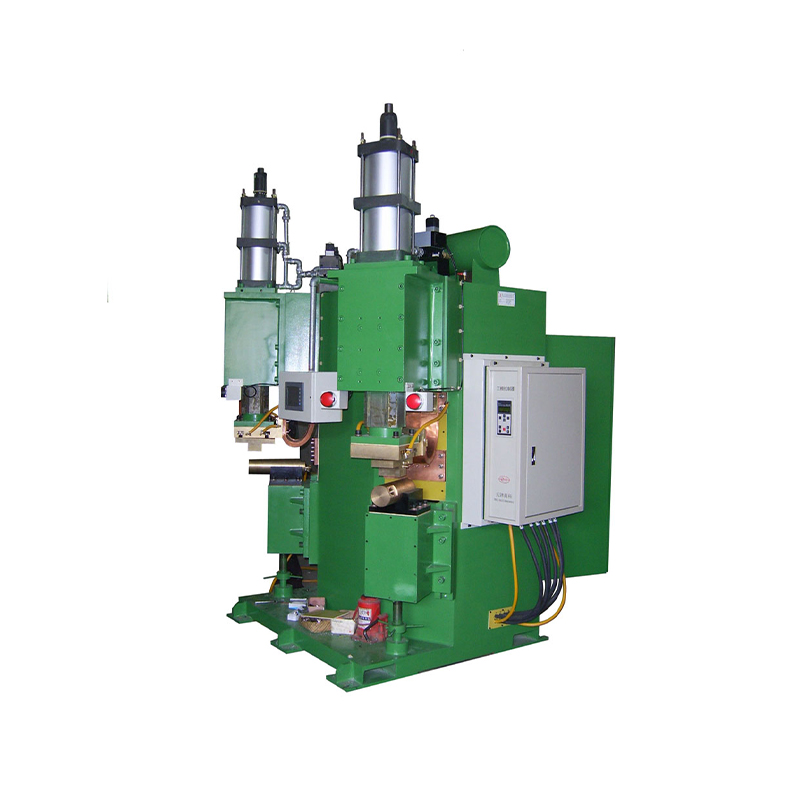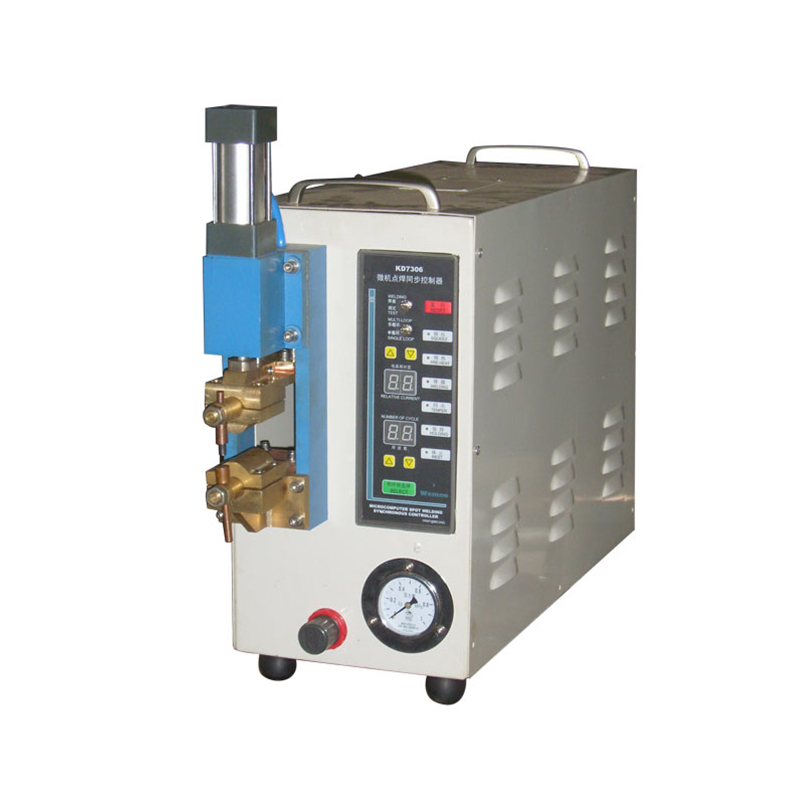What changes have taken place in the role of box seam welding machine in modern manufacturing?
Release Time : 2025-06-12
With the advancement of science and technology and the introduction of the concept of Industry 4.0, the manufacturing industry is undergoing unprecedented changes. As one of the important equipment in the field of metal processing, the role of box seam welding machine is also evolving. It has not only transformed from traditional manual operation to a highly automated and intelligent production tool, but also achieved a qualitative leap in efficiency, precision, flexibility and environmental protection.
1. From manual to automation: double improvement of efficiency and quality
In the past, box seam welding mainly relied on manual operation, which was not only time-consuming and laborious, but also difficult to ensure the consistency and stability of welding. With the introduction of automation, especially the widespread application of CNC technology and robots, the performance of box seam welding machine has been significantly improved. Now, through preset programs, box seam welding machine can accurately complete complex welding tasks, greatly improving production efficiency and product quality. The addition of the automation system makes the welding process more stable and reliable, reduces the errors caused by human factors, and ensures the quality consistency of each weld.
2. The rise of intelligent control systems: a new era of precision
In recent years, the development of intelligent control systems has brought revolutionary changes to box seam welding machines. With the help of advanced sensor technology, image recognition system and big data analysis capabilities, modern box seam welding machines can monitor various parameters in the welding process in real time and make dynamic adjustments according to actual conditions. For example, if the current or temperature is detected to be out of the set range during the welding process, the system will respond immediately and adjust the welding parameters to maintain the best state. This intelligent management not only improves the welding accuracy, but also effectively extends the service life of the equipment and reduces maintenance costs.
3. Application of flexible manufacturing system (FMS): Adapting to diversified needs
Faced with increasingly diversified market demands, the traditional large-scale production model can no longer meet the needs of customers for personalized customization. To this end, many companies have begun to adopt flexible manufacturing systems (FMS), and box seam welding machines, as an important part of them, must also have a high degree of flexibility. The new box seam welding machine can achieve efficient switching of products of different specifications by quickly replacing fixtures and adjusting welding paths. This means that the same production line can adapt to the production requirements of multiple product models in a short time, greatly enhancing the market competitiveness of enterprises.
4. Technological innovation under the concept of green manufacturing
In the context of advocating sustainable development worldwide, reducing energy consumption and environmental pollution has become the focus of attention in the manufacturing industry. Box seam welding machine manufacturers have actively responded to this trend and launched a number of energy-saving products. These devices use more efficient power management systems and optimized welding processes, which can significantly reduce energy consumption while ensuring welding quality. In addition, some advanced welding technologies such as laser welding are also used in box seam welding machines. Due to its non-contact characteristics, it not only reduces material loss but also avoids harmful gas emissions that may be generated by traditional welding methods.
5. Remote monitoring and maintenance: cloud services help smart manufacturing
With the development of Internet of Things technology, more and more box seam welding machines have begun to support remote monitoring functions. Users can view the operating status of the equipment anytime and anywhere through the Internet, and discover and solve problems in a timely manner. At the same time, predictive maintenance services based on cloud computing platforms also provide great convenience for users. Through the analysis of historical data, the system can warn of potential faults in advance and guide users to take preventive measures, thereby reducing unexpected downtime and improving equipment utilization.
In summary, the role of box seam welding machines in modern manufacturing has evolved from simple production equipment to intelligent systems that integrate advanced technologies. It not only improves production efficiency and product quality, but also helps companies better respond to market changes and technological challenges.
1. From manual to automation: double improvement of efficiency and quality
In the past, box seam welding mainly relied on manual operation, which was not only time-consuming and laborious, but also difficult to ensure the consistency and stability of welding. With the introduction of automation, especially the widespread application of CNC technology and robots, the performance of box seam welding machine has been significantly improved. Now, through preset programs, box seam welding machine can accurately complete complex welding tasks, greatly improving production efficiency and product quality. The addition of the automation system makes the welding process more stable and reliable, reduces the errors caused by human factors, and ensures the quality consistency of each weld.
2. The rise of intelligent control systems: a new era of precision
In recent years, the development of intelligent control systems has brought revolutionary changes to box seam welding machines. With the help of advanced sensor technology, image recognition system and big data analysis capabilities, modern box seam welding machines can monitor various parameters in the welding process in real time and make dynamic adjustments according to actual conditions. For example, if the current or temperature is detected to be out of the set range during the welding process, the system will respond immediately and adjust the welding parameters to maintain the best state. This intelligent management not only improves the welding accuracy, but also effectively extends the service life of the equipment and reduces maintenance costs.
3. Application of flexible manufacturing system (FMS): Adapting to diversified needs
Faced with increasingly diversified market demands, the traditional large-scale production model can no longer meet the needs of customers for personalized customization. To this end, many companies have begun to adopt flexible manufacturing systems (FMS), and box seam welding machines, as an important part of them, must also have a high degree of flexibility. The new box seam welding machine can achieve efficient switching of products of different specifications by quickly replacing fixtures and adjusting welding paths. This means that the same production line can adapt to the production requirements of multiple product models in a short time, greatly enhancing the market competitiveness of enterprises.
4. Technological innovation under the concept of green manufacturing
In the context of advocating sustainable development worldwide, reducing energy consumption and environmental pollution has become the focus of attention in the manufacturing industry. Box seam welding machine manufacturers have actively responded to this trend and launched a number of energy-saving products. These devices use more efficient power management systems and optimized welding processes, which can significantly reduce energy consumption while ensuring welding quality. In addition, some advanced welding technologies such as laser welding are also used in box seam welding machines. Due to its non-contact characteristics, it not only reduces material loss but also avoids harmful gas emissions that may be generated by traditional welding methods.
5. Remote monitoring and maintenance: cloud services help smart manufacturing
With the development of Internet of Things technology, more and more box seam welding machines have begun to support remote monitoring functions. Users can view the operating status of the equipment anytime and anywhere through the Internet, and discover and solve problems in a timely manner. At the same time, predictive maintenance services based on cloud computing platforms also provide great convenience for users. Through the analysis of historical data, the system can warn of potential faults in advance and guide users to take preventive measures, thereby reducing unexpected downtime and improving equipment utilization.
In summary, the role of box seam welding machines in modern manufacturing has evolved from simple production equipment to intelligent systems that integrate advanced technologies. It not only improves production efficiency and product quality, but also helps companies better respond to market changes and technological challenges.







